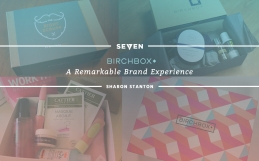Defining your brand is perhaps the most important element in developing a marketing plan. I would even go so far as to argue that it’s impossible to develop a successful marketing plan without a clear brand definition! (In case you need a refresher, take a look at my blog post “What Is a Brand?“.)
Building a compelling brand experience is key to a successful customer experience, and it isn’t just for big corporations – branding is very important for smaller companies looking to make an impression. Make no mistake, developing a brand isn’t simple. It will take some serious data collection, decision making, and soul searching! Here are five things you should define and develop first to help you get started on the path of brand definition.
1. Define the qualities of your products and services.
Listing what benefits your products and services bring will form the base of your brand definition. It helps customers envision specific qualities when they hear your company name, and will add intrinsic value to the emotional attachment behind your brand. Think about some big brands – Nike, Apple, Coca Cola. Whether good or bad, surely there are specific characteristics that come to mind when you think of their products and brand in general.
2. Develop your core values and mission statement.
For many business owners this may seem like a no-brainer, but there are many business owners who get so deep into running their business that they forget why they started it in the first place! Do not make this mistake. A value statement and a mission statement may seem minor, but they make a big difference in the eyes of your customers.
3. Define your target audience.
Now that you know why your products and company are great, figure out who that information should be targeted toward. This will play a part in not only where you find your customers, but how you communicate your brand to them. Be as specific as possible when doing this – imagine your ideal customer, and write down every single thing about them that comes to mind, down to their favorite movie, their alma mater, and what kind of dog they have.
4. Develop the personality and voice of your company.
Yes, even though your company is not a person it should still have these things. This information is important because it dictates how your logo and branding should look, and in what tone your copy should be written. It also will help your customers connect with your brand. Some common “themes” I see are: upbeat, serious, professional, conversational, witty, informative, edgy, friendly, or casual.
5. Define your differentiators.
Most likely you started your business because you noticed a market gap, or knew you could do something better than your competitors were doing it. Make a list of these differences, and develop a way to communicate it to your audience. Knowing what makes you different is the finishing touch to defining your brand!




